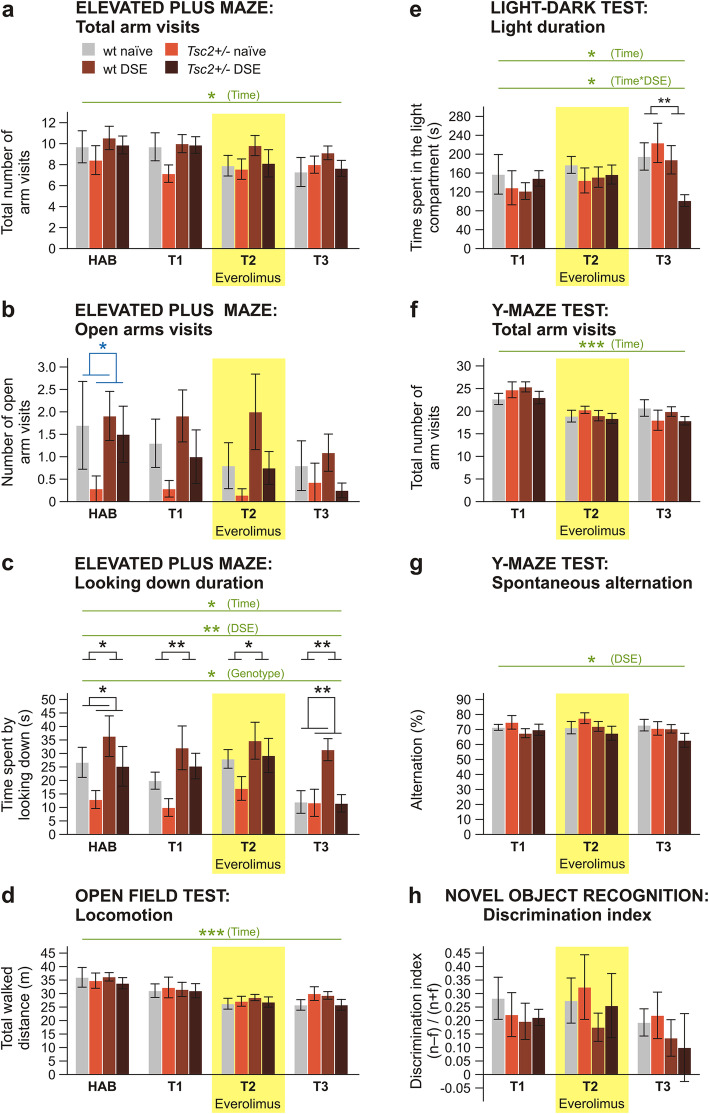Fig. 3.
Effects of everolimus on non-social behaviors in adult rats with Tsc2+/- and DSE. In the elevated plus maze, overall activity measured as total arm visits (a) did not differ between groups. Anxiety measured by open arms visits (b) was not significantly different between groups in the experimental sessions, although in habituation, anxiety was increased in Tsc2+/- groups. Looking down duration (c) was increased by DSE and reduced by Tsc2+/- mutation. Locomotor activity in the open field (d), the time spent in the light compartment in the light-dark test (e) and general level of activity in the Y-maze (f) did not show differences between groups. On the other hand, spontaneous alternation in the Y-maze (g) was decreased in DSE groups according to repeated measures three-way ANOVA, revealing a working memory deficit (although the difference is not seen as significant in two-way ANOVAs for individual days). Novel object recognition (h) performance was not affected by either DSE treatment or genotype. Repeated measure analysis showed significant effect of testing condition in several parameters (a–f); however, in all cases, the behaviors evolved gradually in time in a manner suggesting habituation to the apparatuses or age-dependent changes, rather than everolimus medication as the cause (for all tests, n = 10 for wt naïve, n = 7 for Tsc2+/- naïve, n = 11 for wt DSE, n = 8 for Tsc2+/- DSE). Data are shown as means ± SEM, significances are indicated by asterisks according to three-way ANOVA with repeated measures (in green), two-way ANOVA (in black) or negative binomial model with log link (open arm visits, in blue). NS p > 0.05; * p < 0.05; ** p < 0.01; *** p < 0.001

